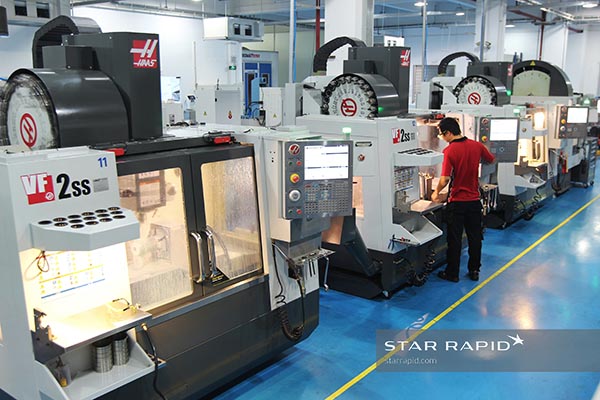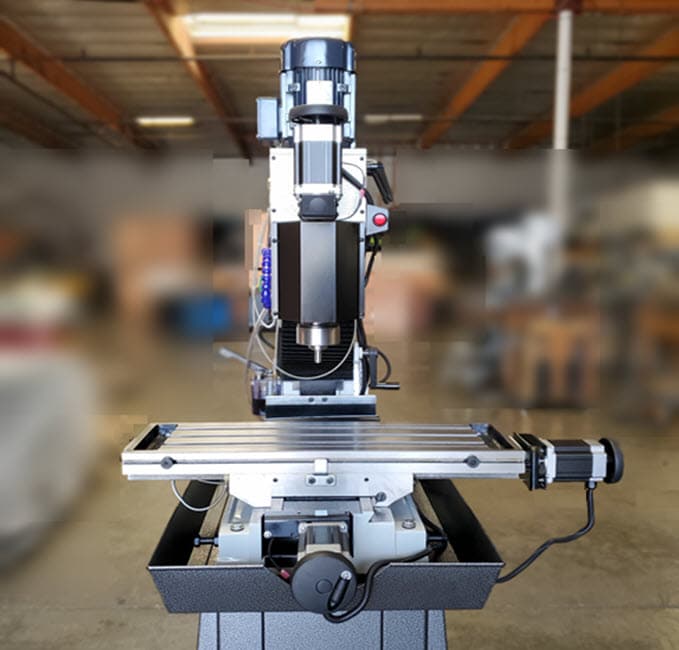Table of Contents
Are you tired of dealing with a CNC mill that just can’t seem to level itself properly? Uneven surfaces can cause havoc with your machining accuracy, leading to disastrous results. Fortunately, leveling a CNC mill isn’t as daunting a task as it may seem. In this guide, we’ll take you through the steps to level your CNC mill and ensure you get the precision and accuracy you need for your projects.
Whether you’re a seasoned machinist or just starting out, proper leveling is essential to ensure that your CNC mill operates smoothly and accurately. In the following sections, we’ll explore the key steps involved in leveling your mill, from checking the level of your machine to adjusting the feet and leveling the table. So let’s dive in and learn how to level a CNC mill like a pro!
- First, clean the machine’s surface and the floor where the mill will be placed.
- Place a precision level on the machine’s table in both directions, adjusting the feet until it’s level.
- Check the levelness of the gantry by placing the level on the spindle and moving it around the table.
- Adjust the leveling screws on the gantry if necessary.
- Repeat the process on all axes until the machine is level in all directions.
How to Level a CNC Mill?
Leveling a CNC mill is essential for precision machining. A poorly leveled machine can result in uneven cuts, inaccurate measurements, and premature wear and tear on the machine. In this article, we will guide you through the steps to properly level your CNC mill.
Step 1: Check the Foundation
The first step in leveling your CNC mill is to ensure that the foundation is stable and level. If the foundation is not level, it will be impossible to level the machine properly. Use a spirit level to check the foundation’s levelness. If the foundation is not level, use shims to level it out.
Once the foundation is level, place the CNC mill on it and check its levelness. If the CNC mill is not level on the foundation, adjust the shims accordingly.
Step 2: Check the Machine Feet
Most CNC mills have adjustable feet that allow you to level the machine. Check the machine feet and make sure they are clean and free of debris. If the machine feet are dirty, clean them before adjusting them.
Adjust the machine feet until the CNC mill is level. Use a spirit level to check the levelness of the machine. Make small adjustments until the machine is perfectly level.
Step 3: Check the Table Levelness
The table is the most critical part of the CNC mill. It is where you will be doing your machining. To ensure precision machining, the table must be level. Use a precision level to check the table levelness. If the table is not level, adjust the leveling screws accordingly.
Once the table is level, use a dial indicator to check the table’s flatness. The table should be flat within a few thousandths of an inch. If the table is not flat, you may need to have it resurfaced.
Step 4: Check the Spindle and Z-Axis
The spindle and Z-axis are critical components of the CNC mill. They must be level to ensure precision machining. Use a precision level to check the spindle and Z-axis levelness. If they are not level, adjust the leveling screws accordingly.
Once the spindle and Z-axis are level, check the tram of the spindle. Tramming is the process of aligning the spindle with the table. Use a dial indicator to check the tram of the spindle. Adjust the tram until it is within a few thousandths of an inch.
Step 5: Check the X and Y Axes
The X and Y axes are critical for precision machining. They must be level to ensure accurate cuts. Use a precision level to check the levelness of the X and Y axes. If they are not level, adjust the leveling screws accordingly.
Once the X and Y axes are level, check the squareness of the X and Y axes. Squareness is the relationship between the X and Y axes. Use a square to check the squareness of the X and Y axes. Adjust the squareness until it is within a few thousandths of an inch.
Step 6: Check the Coolant System
The coolant system is critical for cutting and drilling operations. It must be level to ensure proper coolant flow. Use a spirit level to check the levelness of the coolant system. If it is not level, adjust the leveling screws accordingly.
Once the coolant system is level, check the coolant flow. Make sure that the coolant is flowing properly through the system. Adjust the coolant flow if necessary.
Step 7: Check the Electrical System
The electrical system is critical for the proper functioning of the CNC mill. It must be level to ensure proper electrical connections. Use a spirit level to check the levelness of the electrical system. If it is not level, adjust the leveling screws accordingly.
Once the electrical system is level, check the electrical connections. Make sure that all the connections are tight and secure. Adjust any loose connections if necessary.
Step 8: Run a Test Cut
Once you have leveled the CNC mill, run a test cut to ensure that it is cutting accurately. Use a precision instrument to measure the accuracy of the cut. Make any necessary adjustments to the machine to ensure precision machining.
Step 9: Regular Maintenance
Regular maintenance is critical for the proper functioning of the CNC mill. Check the machine levelness regularly and make any necessary adjustments. Keep the machine clean and lubricated to prevent wear and tear.
Regular maintenance will ensure that your CNC mill lasts for years and produces accurate cuts.
Step 10: Conclusion
Leveling a CNC mill is critical for precision machining. By following these steps, you can ensure that your CNC mill is perfectly leveled and produces accurate cuts. Regular maintenance will keep your machine functioning properly and prevent premature wear and tear.
Remember to check the machine levelness regularly and make any necessary adjustments. With proper maintenance, your CNC mill will last for years and produce accurate cuts.
Frequently Asked Questions
In this section, we will answer some of the most commonly asked questions about how to level a CNC mill. Whether you are a beginner or an experienced machinist, this guide will provide you with valuable information to help you level your CNC mill with ease.
What is CNC mill leveling and why is it important?
CNC mill leveling is the process of ensuring that the machine is perfectly level in all directions. This is important for several reasons. First, it ensures that the machine operates as accurately as possible. Second, it reduces the risk of errors and accidents that can occur if the machine is not level. Finally, it prolongs the lifespan of the machine by reducing wear and tear on the components.
The leveling process involves adjusting the machine’s feet or leveling pads to ensure that the machine is level in all directions. This can be done manually or with the help of a digital level. Once the machine is level, it is ready for use.
How do I know if my CNC mill is not level?
There are several signs that your CNC mill may not be level. These include uneven wear on the machine’s components, inaccurate cuts, and vibrations during operation. If you notice any of these symptoms, it is important to check the machine’s level as soon as possible. This will help to prevent further damage to the machine and ensure that it continues to operate as accurately as possible.
To check the machine’s level, you can use a digital level or a spirit level. Simply place the level on the machine’s table or bed and check the reading. If the reading is not level, you will need to adjust the machine’s feet or leveling pads to correct the problem.
What tools do I need to level my CNC mill?
To level your CNC mill, you will need a few basic tools. These include a digital or spirit level, a set of wrenches or spanners, and a set of shims. You may also need a hammer or mallet to tap the machine’s feet or leveling pads into place. It is important to use the correct tools for the job to ensure that the machine is level and operates as accurately as possible.
If you are unsure about which tools to use, consult the machine’s manual or contact the manufacturer for advice.
How often should I level my CNC mill?
The frequency with which you need to level your CNC mill will depend on several factors, including how often the machine is used and the conditions in which it is used. In general, it is recommended that you check the machine’s level every few months or after any major changes to the machine’s setup or environment. If you notice any signs of uneven wear or inaccurate cuts, it is important to check the machine’s level immediately.
Regular maintenance and cleaning can also help to prolong the lifespan of the machine and reduce the need for frequent leveling.
Can I level my CNC mill myself, or do I need to hire a professional?
Leveling a CNC mill can be a complex process, but it is possible to do it yourself with the right tools and knowledge. However, if you are unsure about the process or do not feel confident in your abilities, it may be best to hire a professional to do the job for you. A professional machinist will have the experience and expertise to ensure that the machine is level and operates as accurately as possible.
Regardless of whether you do the job yourself or hire a professional, it is important to ensure that the machine is level before use. This will help to prevent errors and accidents, and ensure that the machine operates as accurately as possible.
In conclusion, leveling a CNC mill is crucial to ensure precise and accurate machining operations. By following the steps outlined in this guide, you can effectively level your CNC mill and achieve the desired results.
Remember to start by cleaning and inspecting your machine thoroughly before proceeding with the leveling process. Use a reliable leveling tool and take your time to make small adjustments until your machine is perfectly leveled.
Lastly, always double-check your work and test your machine to ensure that it is functioning correctly after leveling. With these tips, you can confidently level your CNC mill and produce high-quality machined parts with ease.
Request a quote today!
[contact-form-7 id="1578" title="Contact form"]
Please compress the file into a ZIP or RAR file before uploading. Alternatively, send through your RFQ by email.
enquires@unitymanufacture.com





